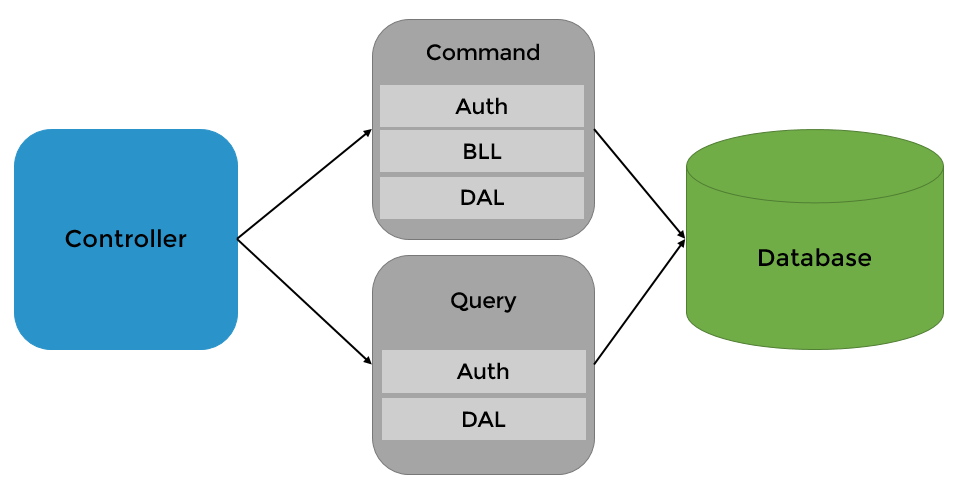Sponsor: Do you build complex software systems? See how NServiceBus makes it easier to design, build, and manage software systems that use message queues to achieve loose coupling. Get started for free.
Developing and thinking about features not layers is something I’ve moved towards over the last several years. I’ve mentioned it in several blog posts and I don’t think I ever explicitly created a post about it.CQRS
The real enabler has been CQRS. For those unfamiliar with CQRS or if you think it’s complicated, let me share a quote from Greg Young:CQRS is simply the creation of two objects where there was previously only one. The separation occurs based upon whether the methods are a command or a query (the same definition that is used by Meyer in Command and Query Separation, a command is any method that mutates state and a query is any method that returns a value).That’s it. It’s nothing more complicated than that. I think where the confusion lies is a lot of articles, blog posts, etc where the content describes much more than CQRS. CQRS is not event sourcing. CQRS is not domain driven design. CQRS does not mean multiple data stores. CQRS does not mean using a service bus. CQRS does mean having eventual consistency. CQRS is simply the creation of two objects where there was previously only one.
Features vs Layers
For me a feature in the technical sense is a command or a query. It could also be a combination of a few put together. I often have commands and queries dictate on their own how they are layered inside. This means that an individual command decides how it may do data access. It may not be a shared concern between another command. For comparison, here’s is how I visualize the difference.Layered
 In the layered approach, we separate and organize our code by technical concerns. Authentication, Business Logic Layer (BLL) and Data Access Layer (DAL) are all contained. Once layer invokes the next.
In the layered approach, we separate and organize our code by technical concerns. Authentication, Business Logic Layer (BLL) and Data Access Layer (DAL) are all contained. Once layer invokes the next.
CQRS
 The difference in our CQRS approach is that our Commands and Queries contain the layers of technical concerns within them. We don’t have layers spanning over the entire application.
This has some pretty profound implications in terms of being able to make different decisions in smaller units.
As well the biggest distinction is we can start thinking, developing and organize our code by business concerns rather than technical concern.
The difference in our CQRS approach is that our Commands and Queries contain the layers of technical concerns within them. We don’t have layers spanning over the entire application.
This has some pretty profound implications in terms of being able to make different decisions in smaller units.
As well the biggest distinction is we can start thinking, developing and organize our code by business concerns rather than technical concern.